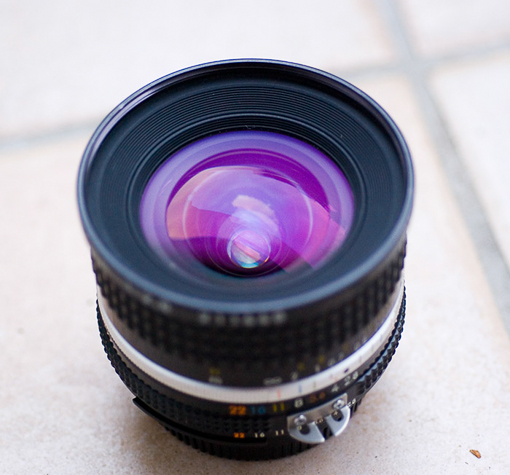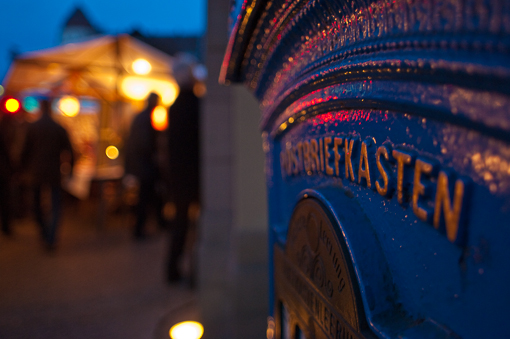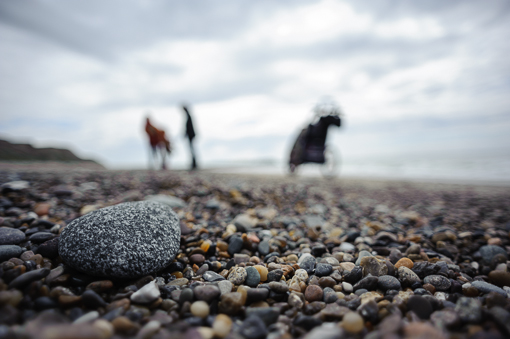Nikkor AIS lenses on FX
Some of the old Nikkor lens legends seem to work very well on the digital FX format. Here is summary of some findings just collected from my digital notepad:
*** Nikon 50 mm f1.2 AIS on D3 FX *** :
Perfect handling due to well damped focus construction, big and heavy but very solid classic Nikkor AIS build quality with extremely tight tolerances and a pleasure to use, unfortunately strong spherical aberrations that make the lens a bit difficult to use with point light sources in the night.
f1.2: center: reduced contrast, extreme edges soft, slightly hazy, difficult to get precise focus at f1.2 without lifeview, CA low and easy to correct in LR
f1.4: center: contrast increased – slightly cleaned haze, extreme edges: soft and reduced contrast, CA low and easy to correct in LR
f2: center: contrast better, no haze anymore, nearly on par with f2,8 sharpness overall much increased, extreme edges still a bit soft, CA: low
f2.8: center very good-excellent contrast, extreme edges: a wee bit softer than f4 but fully usable, CA: unchanged and very low easy to correct in LR
f4: excellent sharpness and contrast, edges and extreme edges are clean, sharp, CA is very low.
f5.6: edges and extreme edges now also excellent, this the top performance of the lens, it doesnt get any better, very low CA easy to correct.
f16: quality deteriorates slightly, diffraction kicks in but still very acceptable performance.
Bokeh at f1.2 is special but the brass lens housing is slightly deforming the CoCs.
*** Nikon 28mm f2 AIS on D3 FX *** :
f2.0: edges soft/hazy but undistorted, center sharp but reduced contrast (hazy especially at contrasty object edges – though not as much as with the 50 mm f1.2 AIS @f1.2),
f2.8: edges get better, extreme edges still soft, center already excellent, overall much much better than at f2.0,
f4.0: extreme edges still a wee bit soft, corners sharp, center excellent,
f5.6: nearly on par with f8: excellent,
f8: maximum performance but very close to f5.6
Very good usable for landscapes with f4, for wide angle /background blur macro work: f2 does it nicely
*** Nikkor 20 mm f2.8 AIS on D3 FX *** :
The weakest of the trio but so small and light … it will stay in my bag:
f2.8: edges very soft and edge features are smeared, center with reduced contrast but sharp, here is obviously some field curvature at work
f4: edges not sharp yet but the center is excellent at f4,
f8-11: edges get sharp by f8-11 and overall excellent sharp images are rendered, BUT even the Tokina 12-24 DX performs better at 20mm f4 on FX than this Nikon 20 mm f2.8 does @f4 on FX
This is likely disappointing for a potential use on a 36MP FX body, at f11 we have reached diffraction limited land – so for landscape kind of shots this lens will not give much flexibility on a 36+MP FX sensor but is nice for these macro low depth of field kind of concepts where the main subject sits in the center.
*** Overall *** :
The 20mm f.2.8 is the weakest of the trio but it is just so tiny compared to the big high res wide zooms and it does the closeup background blur thing so well … .
The 28 mm f2 is the best performer wide open imo. It is already great at f2.8. But I might sell it in the future for a 24-70 f2.8
The 50 mm f1.2 is a very special lens. It has so much potential for extreme low depth of field concepts but it is not so good for point light sources aka shooting stars in the night and related AND you will often get the focus point wrong – this lens is for slow work not for running kids etc. it does not really replace an AFS 50 mm.
The three lenses however form a nice wide-to-normal trilogy for creative approaches if you know about the strong aspects of the designs. Should be mentioned: the sheer quality of the strong and precise metal construction of these lenses makes you smile occasionally. The butter smooth operation is just wonderful and every lens combines nicely with the D700/D800 bodies.




